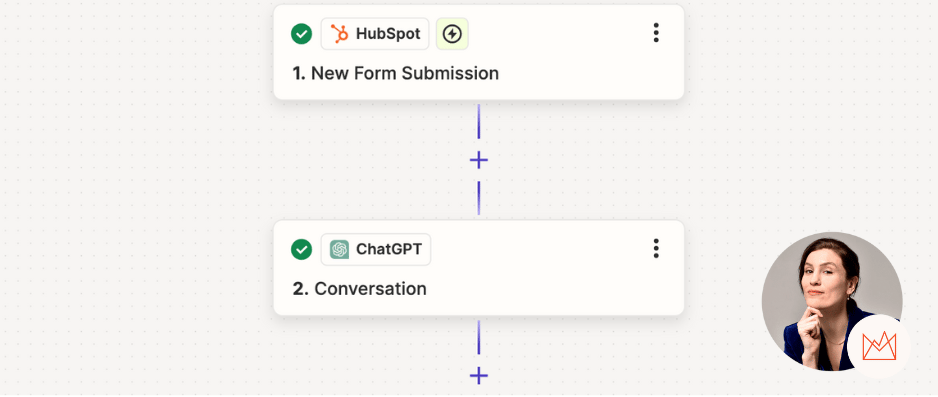How can automation and artificial intelligence transform repetitive tasks for SMEs in 2024?
In 2024, SMEs often need help managing repetitive tasks that can drain human resources and slow growth.
BUSINESS DEVELOPMENT
Parachute
9/2/20245 min read


As small and medium-sized enterprises (SMEs) continually seek to maximize their efficiency and productivity, automation and artificial intelligence (AI) are emerging as allies to alleviate repetitive, time-consuming tasks. These modern technologies don't just simplify everyday life; they are profoundly transforming the way businesses operate. We'll discover how integrating AI and automation can revolutionize their operations by examining SMEs' challenges in various fields. Through concrete examples and real-life situations, we'll explore how these technological solutions deliver tangible improvements in efficiency, productivity, and customer satisfaction, enabling companies to focus on what matters: innovation and development.
➜ Relieve repetitive tasks when organizing events.
Imagine Claire, owner of a small business specializing in event management. She and her team spend several hours daily sending confirmation emails, managing customer inquiries and following up on event details. While these tasks are necessary for the smooth running of the company, they consume a great deal of her time and energy. This administrative workload prevents Claire and her team from concentrating on more strategic activities, such as creating innovative new events, strategically developing the current event, or improving the customer experience, but also hampers the overall business performance. We must find a solution to this problem. Furthermore, these repetitive tasks can lead to overwork and increase employee stress, reducing motivation and commitment. They can also increase the risk of human error and negative impact customer satisfaction and operational efficiency.
➜ How can automation lead to visibility?
Let's take the example of Marc, a marketing manager in a technology company. Marc has to send follow-up emails to prospects, manage marketing campaigns for several products, and analyze campaign performance. Before the advent of automation, each campaign required hours of manual labour to send emails, track responses, and adjust strategies based on the results.
Today, Marc uses a marketing automation platform to program emails based on user behaviour, segment prospects, and track real-time campaign performance. This automation has saved Marc several days of work each month. By freeing up this time, he can concentrate on more creative and strategic tasks, such as designing new advertising campaigns and analyzing market trends.
➜ What about customer interactions?
Another example of customer service comes from Sarah, the customer service manager for an online store. Sarah receives similar questions about delivery times, returns, and exchanges daily. Before the advent of chatbots, she spent a lot of time answering these repetitive questions, which slowed down her ability to solve more complex problems and offer personalized service.
Today, most of these requests are handled automatically, thanks to intelligent chatbots and artificial intelligence. Large companies with multiple requests invest in chatbots programmed to answer frequently asked questions, guide customers through their choices and solve common problems. For example, a customer who wants to know the status of his order can get an instant response via the chatbot without waiting for an email reply. This reduces response times and significantly improves customer satisfaction, a key goal for any business.
➜ Automation for marketing campaigns.
Marketing has recently exploited automation and artificial intelligence at lightning speed. Automating marketing campaigns enabled Julien, a fashion entrepreneur, to launch his new clothing line while gaining greater visibility. When it comes to marketing campaigns, creating and managing personalized landing pages is a monumental task. Before using automation tools, Julien had to contact a specialist who manually created a landing page, adjusting the content according to performance and results.
Using automation tools, the marketing specialist can create multiple landing pages tailored to Julien's different audience segments without having to do it manually. The tools have also made it possible to optimize content according to page performance, adjusting elements in real time to maximize conversions. For example, if a landing page attracted many visitors but had a low conversion rate, the automation tool could adjust content to improve effectiveness through A/B testing.
This approach enabled the marketing professional to launch Julien's campaign efficiently, focus on other creative and strategic aspects of the business, and achieve measurable and improved results.
➜ Improving data management with artificial intelligence.
When we think of data management, we think of data analysts. Julie was responsible for compiling and analyzing customer data to guide marketing strategies within an SME in the finance sector. Before the advent of artificial intelligence, this task was tedious and prone to human error. Julie had to spend hours manually processing data and performing trend analysis.
By integrating AI-based data analysis tools, Julie can now process large quantities of data quickly and accurately. AI analyzes data in real-time, identifies trends, makes predictions and proposes recommendations based on relevant information. For example, if the data shows a growing trend in demand for a certain product, AI can recommend adjustments in marketing strategies to take advantage of this trend. This saves time and ensures that Julie can concentrate on interpreting the results and formulating strategies based on deeper insights while letting the AI handle the repetitive tasks of data processing, freeing up her time for more strategic tasks.
➜ So, what are the most effective automation and artificial intelligence tools for SMEs?
For SMEs wishing to integrate automation and artificial intelligence, choosing the right tools that meet their specific needs is essential. Here are a few practical tools:
HubSpot: A marketing automation platform that offers features such as email management, contact segmentation, landing page creation, and campaign performance analysis. HubSpot suits SMEs looking to automate their marketing campaigns and improve their lead management.
Zendesk: A customer relationship management (CRM) tool that offers intelligent chatbots and automation features for customer service. Zendesk helps SMEs save time and improves their customer support by automating answers to frequently asked questions and optimizing customer interactions.
Salesforce: A CRM platform that integrates data analysis and sales automation tools. Salesforce enables SMEs to manage customer relationships, automate sales processes and analyze campaign performance.
Google Analytics: A data analysis tool that uses AI to provide detailed insights into user behaviour and marketing campaign performance. Google Analytics helps SMEs make data-driven decisions and optimize their marketing strategies.
➜ How do you implement automation and artificial intelligence in an SME?
Marc, Claire, Sarah, and Pierre illustrate how SMEs can benefit from automation and AI. To successfully integrate these technologies, here are some critical steps:
Identify repetitive tasks: As Claire and Sarah did, start by identifying tasks that take time and resources. This might include managing emails, handling inquiries, and analyzing data.
Please choose the right tools: Marc and Julien selected tools that specifically met their needs. You can do your research to choose automation and AI tools that integrate well with your existing systems and offer the necessary features.
Train employees: It's essential to ensure your team is well-trained to use new technologies, just as Julie has mastered data analysis tools. Please offer comprehensive training and resources to help your employees familiarize themselves with and use the tools effectively.
Evaluate results: Evaluate results regularly to adjust processes after implementation. Just as Pierre adjusted his landing pages to maximize performance, monitor the performance of automation and AI tools and make changes as necessary to optimize results.
➜ A more efficient future for SMEs in 2024
In 2024, automation and artificial intelligence will offer unprecedented opportunities for SMEs seeking to optimize their operations. By simplifying repetitive tasks, these technologies free up time and improve overall efficiency. Claire, Marc, Sarah, Julien, and Julie's experiences show that successfully integrating these tools requires careful planning, thoughtful adoption, and ongoing evaluation of results.
By embracing automation and artificial intelligence, SMEs can prepare for a future in which efficiency and innovation are at the heart of their success.
Read more: Comment l’intelligence artificielle aide les petites entreprises d’aujourd’hui
& La croissance et le développement des PME avec l’intelligence artificielle
Professional expertise + AI support = quality content


ADDRESS
Studio Parachute|360 Agency
Montréal, Québec, Canada
2023 All rights reserved to Parachute 360 Studio-Agency S.A./ Our terms and conditions /Privacy policy
